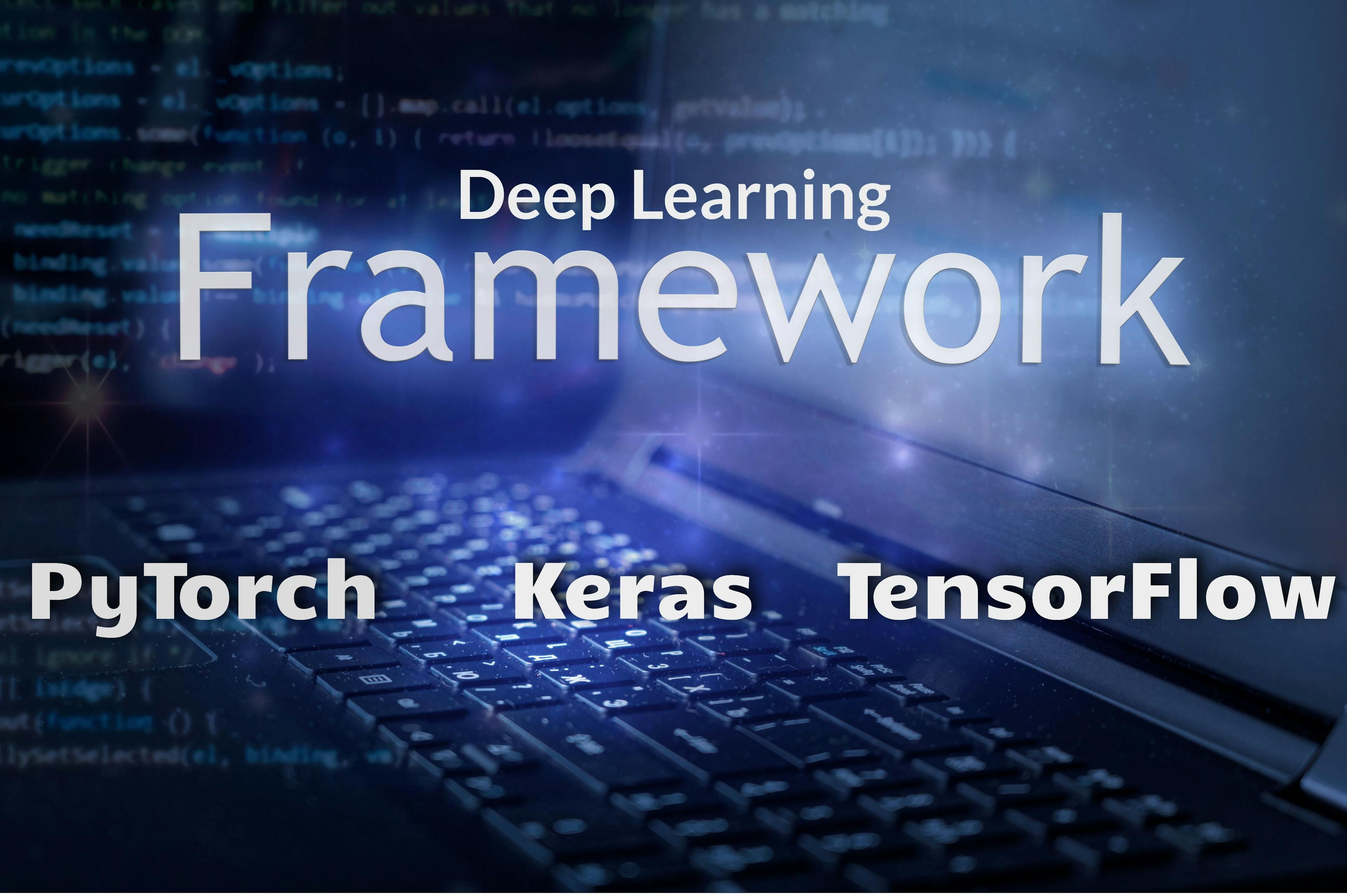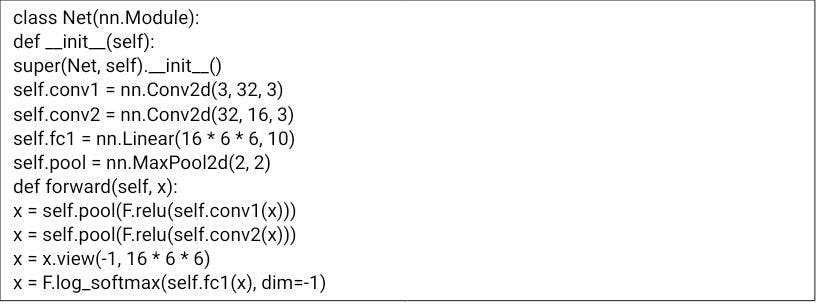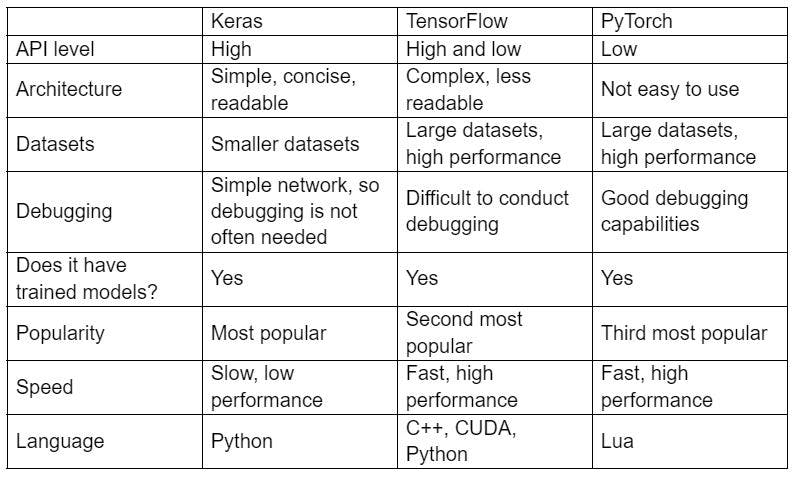Leverage Turing Intelligence capabilities to integrate AI into your operations, enhance automation, and optimize cloud migration for scalable impact.
Advance foundation model research and improve LLM reasoning, coding, and multimodal capabilities with Turing AGI Advancement.
Access a global network of elite AI professionals through Turing Jobs—vetted experts ready to accelerate your AI initiatives.
FOR DEVELOPERS
In-Depth Guide on Deep Learning Frameworks - Keras, TensorFlow, PyTorch

Deep learning (DL) and the human brain share a commonality: they process data in a similar fashion. However, DL learns from unstructured and unlabeled data without human supervision or interaction. It uses a hierarchical level of artificial neural networks designed in much the same way as the human brain, with neuron nodes connected in a web to process machine learning.
Deep learning may be used for decision-making, object detection, speech recognition, and language translation. Traditional machine learning algorithms linearly analyze data whereas deep learning's hierarchical function allows computers to interpret data nonlinearly.
The words ‘deep learning’, ‘machine learning’, and ‘artificial intelligence’ are sometimes used interchangeably, which can cause some misunderstanding. While the artificial intelligence (AI) family includes both deep learning and machine learning, the former is a subset of ML. Therefore, any discussion of Keras or TensorFlow or PyTorch, and the comparisons among them, must begin with an understanding of the complexities of these ideas.
What is Deep Learning?
Deep learning is a three-layer neural network that aims to imitate the human brain’s activity by learning from enormous volumes of data - although it falls short of the brain’s capabilities.
While a single-layer neural network may produce approximate predictions, more hidden layers can assist in optimizing and improving accuracy. Artificial intelligence apps and services often rely on deep learning to increase automation by executing analytical and physical activities without human participation. Everyday goods and services - such as digital assistants, voice-enabled TV remote controls, credit card fraud detection, and innovations like self-driving cars - use deep learning technology.
What is a Deep Learning framework?
DL frameworks provide the building blocks for developing, training, and evaluating deep neural networks through a high-level programming interface. Some of these frameworks include Keras, TensorFlow, Pytorch, Caffee, etc.
Choosing the correct deep learning framework to study is the first step to achieving any DL learning objectives, whether it is to be applied to business, building a project, or developing valuable capabilities. This choice depends on several parameters. There can be no straightforward answer to which the best framework is; it rests on the preference and abilities of a particular developer.
Following is a list of questions that can be useful when deciding the right DL framework:
- As a developer, what do you look for in a DL framework?
- Should you create your own model or use one that already exists?
- How can you use low-level application programming interfaces (APIs) to find a balance between productivity and control?
- Which language should you go with?
What is Keras?
Keras is a Python-based API for high-level neural networks. This open-source toolkit is built on top of CNTK, TensorFlow, and Theano and can be used to experiment with deep neural networks quickly. Keras emphasizes modularity, usability, and extensibility. It does not handle low-level computations; instead, it passes them to the backend, which is a separate library.
In mid-2017, Keras was adopted and incorporated into TensorFlow. The tf. Keras module gives users access to it. On the other hand, the Keras library may continue to function independently.
For example, the following code shows how to define a simple convolutional network in Keras.

Merits
- A fantastic high-level API.
- TensorFlow, Aesara/Theano, and CNTK are all seamlessly integrated.
- It is straightforward to learn, and easy to create new architectures.
- Multiple pre-trained models are available.
Demerits
- The best option for tiny datasets.
- Sometimes referred to as a ‘frontend’ framework, and may be slower than other backend frameworks when compared to TensorFlow.
What is Tensorflow?
TensorFlow is a Google-developed end-to-end open-source deep learning framework that was launched in 2015. It is well-known for its documentation and training assistance, its scalable production and deployment options, many abstraction levels, and support for a variety of platforms, including Android.
TensorFlow is a promising and rapidly developing deep learning platform that provides a flexible, complete ecosystem of community resources, libraries, and tools for creating and deploying machine learning programs.
It is a symbolic math toolkit for neural networks that are ideally suited for dataflow programming in various applications. It allows for the construction and training of models at many abstraction levels.
As mentioned earlier, TensorFlow has embraced Keras, making comparisons between the two difficult. Nonetheless, we will compare them for completeness, especially because Keras users are not required to utilize TensorFlow.
The following code shows how to define a simple convolutional network in TensorFlow.

Merits
- Support for computational graphs is excellent, both in terms of computation and visualization (via TensorBoard).
- Google provides support for Keras Library administration with frequent upgrades and releases.
- Pipelines with a lot of parallelisms and much scalability.
- TPUs are readily available.
- Able to debug code using a debugging technique.
Demerits
- There is a steep learning curve because of the low-level APIs.
- While Google supports library management, the documentation for new releases can be somewhat outdated at times.
- The code might be a little disorganized.
- TPUs can only be used to run a model, not train it.
- Only NVIDIA GPU acceleration is supported. It likewise only supports Python for GPU programming under Windows OS.
What is PyTorch?
PyTorch is a Torch-based deep learning framework that is relatively young. Developed by Facebook's AI research department and open-sourced on GitHub in 2017, it is used for natural language processing applications. PyTorch is known for its ease of use, flexibility, memory efficiency, and dynamic computational graphs. It also has a natural feel, making code easier to manage and enhancing processing speed.
The following code shows how to define a simple convolutional network in PyTorch.

Merits
- Simple to learn.
- Eager execution is aided by dynamic graph logic.
- Developed in Python natively, making development extremely ‘pythonic’.
- GPU and CPU support are available.
- Distributed training is supported.
Demerits
- An API server is required for production.
- Visualization of the training process with Visdom is limited.
- PyTorch is not as well-known as TensorFlow - albeit it is growing in popularity.
Summarization of differences between Keras, TensorFlow, and PyTorch

Keras, TensorFlow and PyTorch are the most popular frameworks used by data scientists as well as naive users in the field of deep learning. But since every application has its own requirement and every developer has their preference and expertise, picking the number one framework is a task in itself.

Press

Blog
